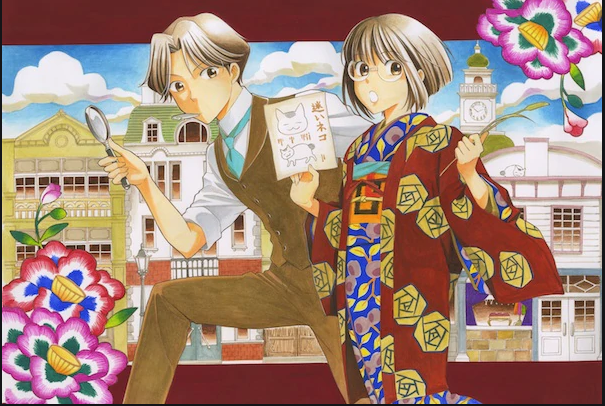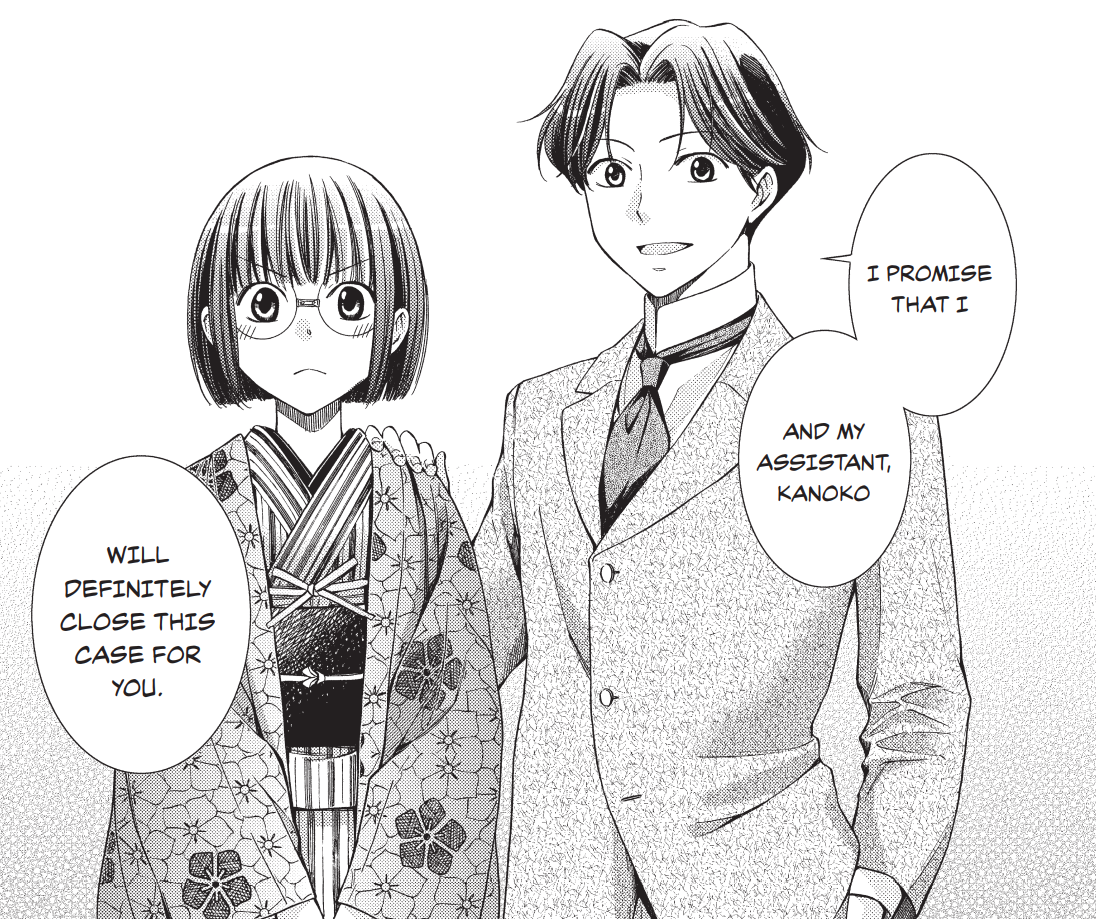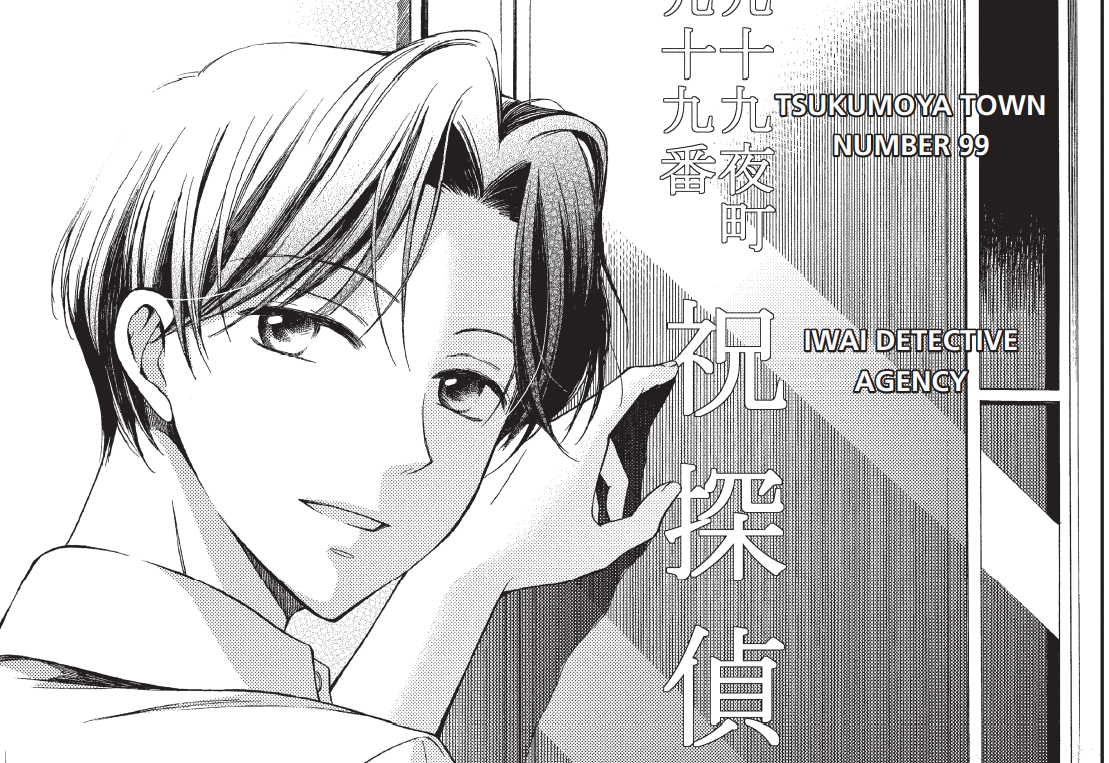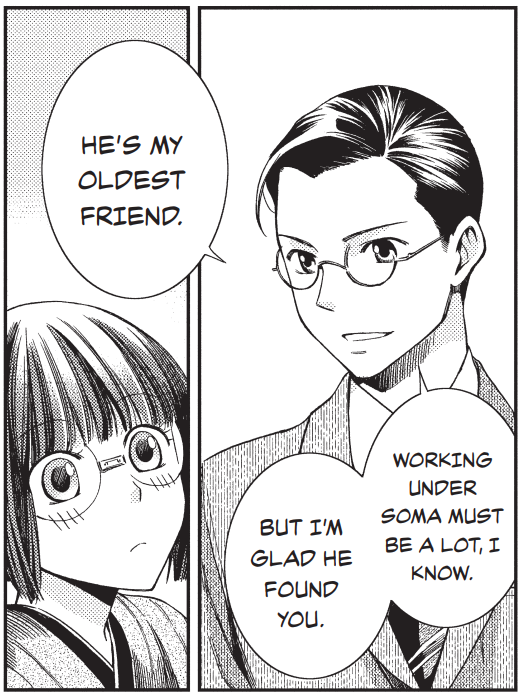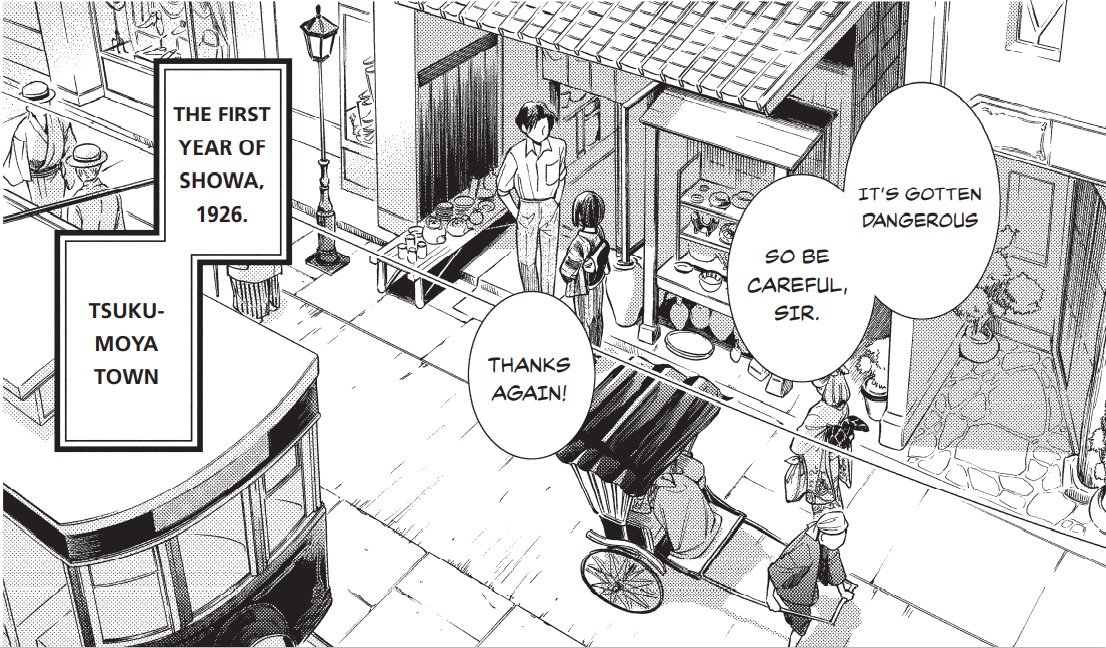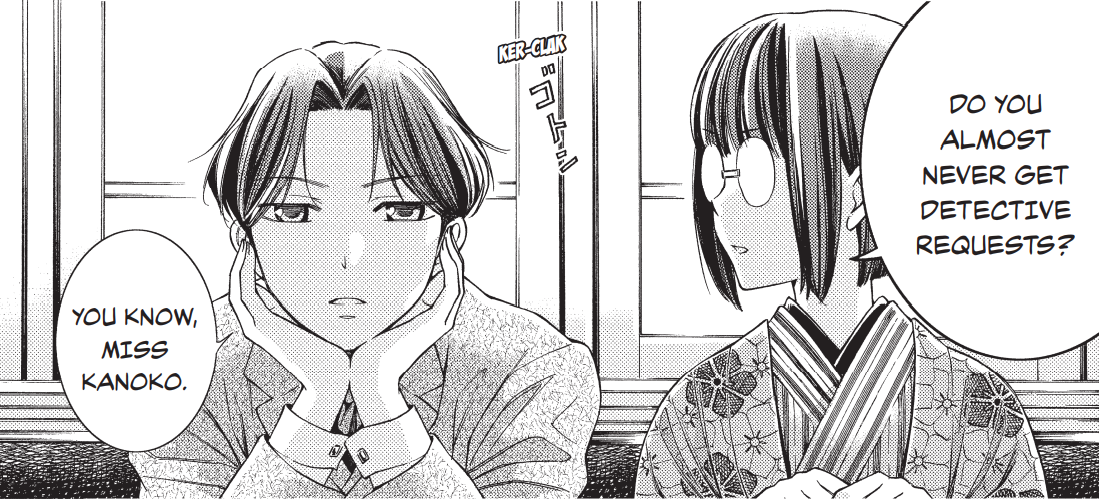Usotoki Rhetoric Review
In a society that values politeness above nearly everything else, little white lies are commonplace in Japan. Polite or considerate lies are like the oil that keeps the machine of Japanese society running smoothly. Whether true or false, ordinary people accept polite sentiments as social courtesies. Sixteen-year-old Kanoko Urabe, however, is not an ordinary person. Unlike most people, Kanoko can hear the difference between truth and lie. Any deliberately spoken mistruth has a distinctive ring in her ears. As a young child, she doesn’t understand how to use this distinguishing talent of hers, and she suffers for her unusual trait. But when she comes to the big city and encounters a private detective, Kanoko comes to learn that her unique ability may have a usefulness that she never realized. Creator Ritsu Miyako’s historical fiction manga Usotoki Rhetoric is a pleasantly amusing, lightly comical detective drama.
Set in 1926, the first volume of Usotoki Rhetoric revolves around teen girl Kanoko Urabe who finds herself in the city of Tsukumoya after she’s practically exiled from her small village by neighbors who take offense to the invasiveness of Kanoko’s ability to invariably tell when someone is lying. By coincidence, Kanoko encounters the down-on-his-luck private detective Soma Iwai. Although he’s poor and lacking in clients, Soma’s deductive and observational skills are first-rate, and he’s quick to realize that Kanoko’s ability to instantly recognize a lie would be an invaluable tool to a detective. So he takes her in as a lodger and assistant detective. The first Usotoki Rhetoric manga volume depicts Kanoko’s arrival in the city, her meeting with Soma Iwai and his friends, Kanoko’s first attempt at solving a mystery herself, and her first case as Soma’s formal assistant.
Ritsu Miyako’s illustration style bears influence from shoujo manga traditions yet is primarily grounded. Character renditions are often a bit comically stylized, but the overall theme of the illustration is realistic and historically accurate. Backgrounds are not always fully developed, but when necessary the backgrounds are rich and detailed. Screentone is also used extensively and effectively to give the page a sense of depth and detail. Characters are expressive and animated. However, police detective Hanasaki is so frequently drawn as a simplified comical character that his occasional serious and realistic appearances are jarring. They look so much like a completely different character that the reader may be initially confused, thinking that he actually is a new character that wasn’t properly introduced.
A couple of minor weaknesses hinder the book. Early in the first volume, whether due to the original scripting or the translation I cannot tell, sometimes the scripting is a bit choppy, making the writing a bit disjointed. Occasionally lines of dialogue won’t be clearly attributed to their speaker. Moreover, occasionally the script depicts both what characters think and say, so the script on the page feels as if it abruptly changes topic or as if lines of dialogue don’t relate to each other. Thankfully, seemingly as writer Ritsu Miyako became more used to the characters and scenarios, this disjointed confusion stops after roughly the second chapter. A slightly more prominent and persistent problem is the manga’s decision to designate different tones of voice or dialogue from other times or scenes with different fonts. When Kanoko hears a lie, the word balloon is usually stylized with a screentone background. However, when she hears a lie that’s not spoken directly to her or when the perspective shifts to another character, the lie does not have its stylized word balloon. More confusing still, a heavy boldface is used to distinguish when dialogue from a different time or location spills over into a current scene. But a nearly identical font is used to depict urgent or desperately shrill dialogue. The similarity can create confusion for readers who aren’t paying very close attention to the fonts used on the page. The manga translation is also slightly jarring because usually Japanese text is retained with a parallel translation, but in one noticeable panel the Japanese text is overlaid with the English translation.
The manga contains no especially graphic violence, no sex or nudity, and only one instance of harsh language. In effect, the manga is suitable for readers of virtually any age. The criminal mysteries illustrated in the first volume are complex enough to constitute genuine detective mysteries. Yet the book’s emphasis is on light humor rather than serious deduction. Characterizations have some depth, but considering that the first volume covers a relatively short span of time, characters don’t evolve tremendously. The first book does do a nice job of depicting Kanoko begin to emerge from her shell as she gradually learns that her ability is as much a gift as a curse.
The first volume of Ritsu Miyako’s lighthearted historical detective mystery manga is inoffensively pleasant. Not as thrilling or threatening as typical detective manga, Usotoki Rhetoric is something more like a manga comfort blanket. The manga contains hints of tragedy, adventure, romance, and comedy without ever committing heavily to any genre style. Thus the book ought to be accessible and appealing to a wide audience of tastes and readers. The setting, characterizations, and scenario are fertile enough to make the first book a solid foundation for an enjoyable series. The first officially English translated volume of Ritsu Miyako’s manga Usotoki Rhetoric is available now from One Peace Books.
